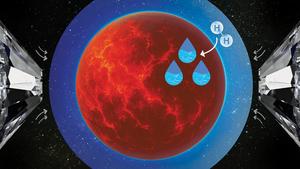Category: 7. Science
-

New Mechanism Enables Precision Biased GPCR Therapies
About one-third of all drugs approved by the Food and Drug Administration target the largest family of cell membrane receptors called G protein-coupled receptors (GPCRs).
GPCRs are indispensable for maintaining human health as they play a…
Continue Reading
-

New Mechanism Enables Precision Biased GPCR Therapies
About one-third of all drugs approved by the Food and Drug Administration target the largest family of cell membrane receptors called G protein-coupled receptors (GPCRs).
GPCRs are indispensable for maintaining human health as they play a…
Continue Reading
-

Massive Sauropod Trackway Uncovered in the UK
Millions of years ago (supposedly), a single sauropod—maybe a Cetiosaurus—strolled across a mudflat, leaving behind it a long series of massive footprints. The hot sun baked the footprints, and a storm quickly blew in, dragging in a wave of…
Continue Reading
-
Just a moment…
Just a moment… This request seems a bit unusual, so we need to confirm that you’re human. Please press and hold the button until it turns completely green. Thank you for your cooperation!
Continue Reading
-

Europe is working to develop reusable rockets by the early 2030s
Europe’s ArianeGroup is set to fly a series of demonstrators in a bid to develop sovereign reusable launch capabilities.
“Callisto, Themis and Skyhopper are different demonstration programs contributing to the development of a European reusable…
Continue Reading
-
Just a moment…
Just a moment… This request seems a bit unusual, so we need to confirm that you’re human. Please press and hold the button until it turns completely green. Thank you for your cooperation!
Continue Reading
-
Comet Lemmon will be a Halloween treat – Astronomy Magazine
- Comet Lemmon will be a Halloween treat Astronomy Magazine
- ‘Miracle’ photo captures Comet Lemmon and meteor seemingly entwined over Earth Live Science
- Comet Tracker For Wednesday: See Comets For Final Time As Moon Grows Forbes
- Starwatchers capture…
Continue Reading
-
Just a moment…
Just a moment… This request seems a bit unusual, so we need to confirm that you’re human. Please press and hold the button until it turns completely green. Thank you for your cooperation!
Continue Reading

